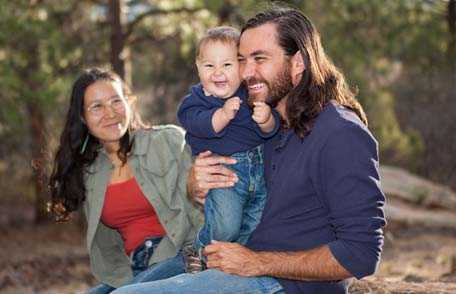Celebrate Native American Heritage Month!
 Learn more about Native American Heritage Month, the health status of this population, and some of the research CDC is doing.
Learn more about Native American Heritage Month, the health status of this population, and some of the research CDC is doing.
The first American Indian Day was celebrated in May 1916 in New York. Red Fox James, a Blackfeet Indian, rode horseback from state to state, getting endorsements from 24 state governments, to have a day to honor American Indians. In 1990, President George H.W. Bush signed a joint congressional resolution designating November 1990 as “National American Indian Heritage Month.” Similar proclamations, under variants on the name (including “Native American Heritage Month” and “National American Indian and Alaska Native Heritage Month”) have been issued every year since 1994.
When the framers gathered to write the United States Constitution, they drew inspiration from the Iroquois Confederacy, and in the centuries since, American Indians and Alaska Natives from hundreds of tribes have shaped our national life. During Native American Heritage Month, we honor their vibrant cultures and strengthen the government-to-government relationship between the United States and each tribal nation.
Strategies for Reducing Health Disparities
As we celebrate Native American Heritage month this year, CDC highlights The Strategies for Reducing Health Disparities — Selected CDC-Sponsored Interventions, United States, 2014 and 2016 reports, which offer real-world examples of how public health programs can address health disparities.
The 2014 report includes how four American Indian/Alaska Native tribal communities implemented evidence-based road safety interventions to reduce motor vehicle-related injuries and death. The 2016 report discusses the Traditional Foods Project, which works to restore access to local, traditional foods and physical activity to promote health.

Heart disease and cancer are the leading causes of death for American Indians and Alaska Natives (AI/AN).
Mortality and Morbidity
Heart disease and cancer are the leading causes of death for American Indians and Alaska Natives.
In addition, a variety of health disparities affect AI/AN communities, including, disproportionately high prevalences of the following:
- Diabetes
- Obesity
- Suicide
- Teenage Pregnancy
- Infant Death
- Unintentional Injuries
- Motor Vehicle Injuries
- Chronic Liver Disease, and Cirrhosis
- Chronic Respiratory Disease
- Smoking
- Drug and Alcohol Use
- HIV/AIDS
CDC Health Disparities & Inequalities Report (CHDIR)
The CDC Health Disparities & Inequalities Report – United States, 2013 (CHDIR) is important for encouraging action and facilitating accountability to reduce changeable disparities by using interventions that are effective and scalable. The report also underscores the need for more consistent data on population characteristics that have often been lacking in health surveys such as disability status and sexual orientation.
More Information
More Information
- CDC Feature: National Native HIV/AIDS Awareness Day ~ March 20th
- Health Disparities in HIV/AIDS, Viral Hepatitis, STDs, & TB: American Indians & Alaska Natives
- Health, United States, 2015 – American Indian or Alaska Native Population
- Tribal Advisory Committee
- FastStats – Health of American Indian or Alaska Native Population
- HHS, Minority Women’s Health – American Indians/Alaska Natives
- White House Initiative on American Indian and Alaska Native Education
- Tribal Colleges & Universities (TCUs)
- National Native American Heritage Month, 2016
- US Census Bureau, Facts for Features
- Page last reviewed: November 21, 2016
- Page last updated: November 21, 2016
- Content source:
- Office of Minority Health & Health Equity (OMHHE)
- Page maintained by: Office of the Associate Director for Communication, Digital Media Branch, Division of Public Affairs




 ShareCompartir
ShareCompartir